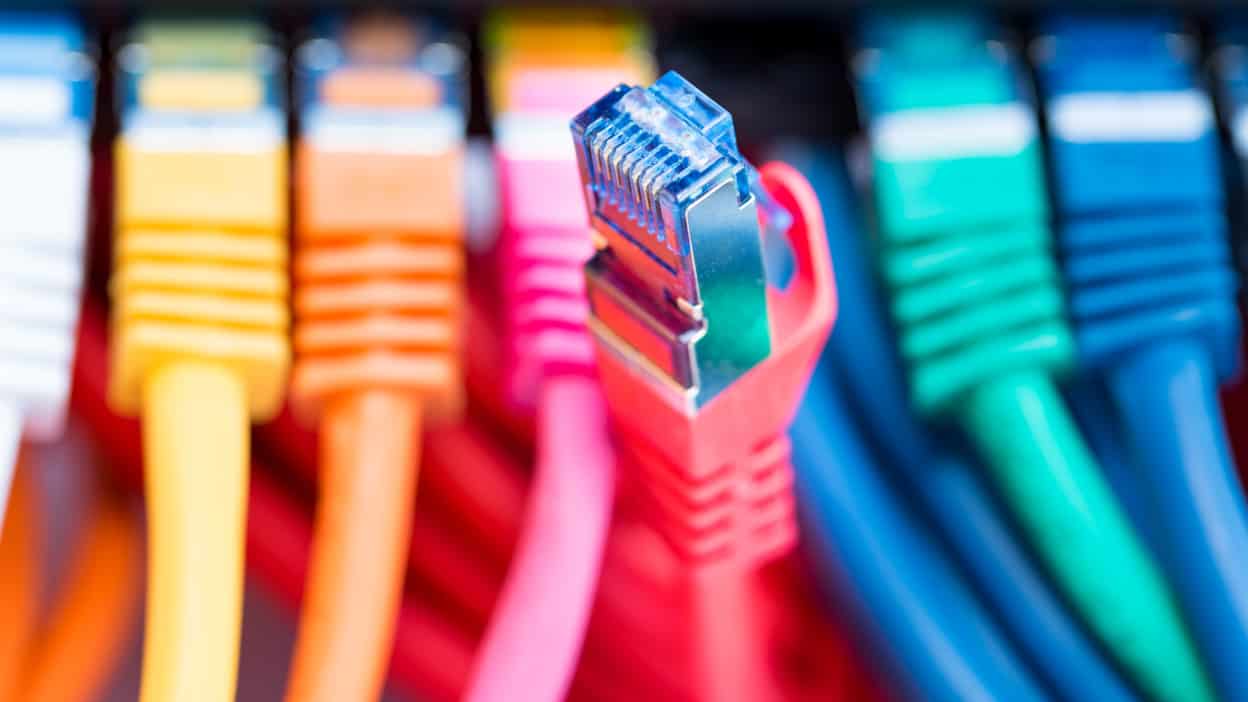CAT 7 Vs CAT 8 Ethernet Cables

Table of Contents
Throughout its 48 years (and counting) lifespan, ethernet technology has undergone some amazing changes and upgrades throughout the years. Bob Metcalfe, the father of ethernet technology, detailed his new method of connecting workstations at high speeds. This was mostly to print on Xerox high-speed laser printers back in May 1973 but culminated in linking Xerox graphical interfaces (Xerox Alto) and other devices via high-speed LAN technology.
The very idea of ethernet connection was based on computers speaking to each other. Combining this mindset with the applications of the internet a decade or two later, personal and business networks blew up and are now the basis for most home and work internet solutions. Even if you are completely running on Wi-Fi connections, ethernet connections are still needed to run diagnostics and to create stable networks with no dropout or latency issues.
Why Use Ethernet Over Wi-Fi?
The fewer CAT 7 or CAT 8 cables lying around the better, and Wi-Fi has really helped in cleaning up office spaces and has made the internet more accessible for more devices. The latest Wi-Fi technology, Wi-Fi 6, can handle speeds of up to 9.6 GBPS providing your router and network equipment are Wi-Fi 6 compatible. But, Wi-Fi is subject to latency, signal strength, and other variable pitfalls caused by walls and even fish tanks.
Although we've been using radio signals to send information to each other worldwide for decades, a wired ethernet connection harnesses the power of near-instant data delivery. That copper wire can support up to 40 GBPS dependant on the grading of ethernet cables you're using. Not to mention, some cables use shielding techniques against electromagnetic interference (EMI) such as twisting wire to reduce interference for example.
CAT 7 vs. CAT 8: What Is CAT 7?
Category 7 ethernet is a proprietary standard developed by a group of companies. In other words, it's not an officially endorsed cable standard but is compatible with most devices. The refined version of CAT 7, CAT 7a is capable of 10 GBPS @ 100 meters, 40 GBPS up to 50 meters, and 100 GBPS within 15 meters @ 600MHz
CAT 7 vs. CAT 8: What Is CAT 8?
CAT 8 is the latest IEEE standard in copper Ethernet cable. Much like CAT 7/7a, CAT 8 features shielded twisted pairs but is wrapped in a conductive material (in some cases foil) to eliminate EMI altogether. It outputs 40 GBPS over a 30-meter distance @ 2GHz
CAT 7 vs. CAT 8: Price
When thinking about pricing, we have to consider that CAT 7 vs CAT 8 perform at different speeds at different lengths of cable as previously mentioned whilst booth maintaining bandwidth between 600MHz to 2000MHz. When comparing lengths of cable, CAT 8 cable comes out more expensive due to its twisted pair design and better shielding. Long story short, the copper cable has more twists than CAT 7 and uses foil in its shielding. This means more time and resources when manufacturing, the cost of which is passed on to lovely consumers.
CAT 7 vs CAT 8: Which One Should I Use?
Both cables have their uses in the right scenario. For any networking or ethernet connectivity under 30 meters, CAT 8 is always going to perform better thanks to its 2GHz (2000 MHz) bandwidth and 40 GBPS data transfer game. CAT 8 cable is the go-to for data centers and any close-by network that deals with heavy traffic.
For anything over 30 meters that needs twisted pair shielding for those all-important conference calls and video/music editing, CAT 7 is a wise choice. It still knocks out 10 GBPS @ 600MHz, giving users plenty of room to stretch that gigabyte internet package or business broadband deal.
CAT 7 vs CAT 8: Conclusion
Ultimately, it depends on what you need. CAT 7 vs CAT 8 are both backward compatible with networking and tech equipment in use today. As previously mentioned, you're the only limit is distance and what kind of performance you need from those devices at a said distance. All being said and done, either will do the job for even the best Gigabit internet connections.
